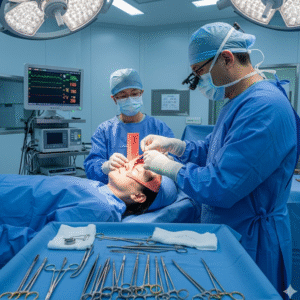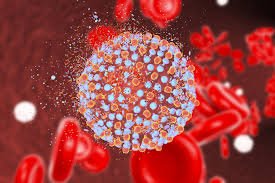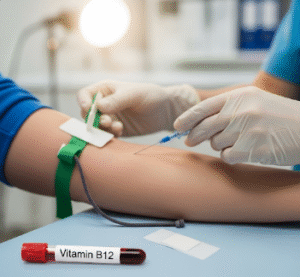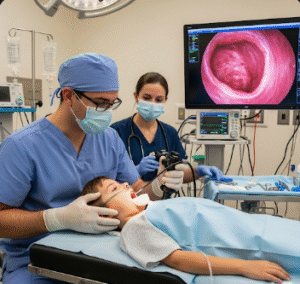Overview
Dyspnea is the medical term for shortness of breath or difficulty breathing, which can range from mild discomfort during exertion to severe breathing distress at rest. It is a common symptom of numerous respiratory, cardiovascular, and systemic conditions. Dyspnea can significantly affect quality of life, physical activity, and overall health. In Korea, pulmonology and cardiology clinics provide advanced diagnostics and treatments for patients experiencing dyspnea.
Highlights:
➤ Symptom, not a disease – Dyspnea can indicate underlying health conditions
➤ Acute or chronic – Can develop suddenly or gradually over time
➤ Impact on daily life – Limits physical activity and can cause anxiety
Key Facts
➤ Prevalence: Dyspnea is a common complaint worldwide, particularly among patients with heart and lung diseases.
➤ Age affected: Can occur at any age but is more frequent in older adults.
➤ Gender: Both men and women are affected equally.
➤ Impact: Persistent dyspnea can lead to reduced exercise tolerance, anxiety, sleep disturbances, and decreased quality of life.
What is Dyspnea?
Dyspnea is defined as the subjective sensation of breathing discomfort, often described as tightness in the chest, air hunger, or labored breathing. It can result from lung conditions, heart problems, anemia, or anxiety disorders.
Highlights:
➤ Acute dyspnea: Sudden onset, may indicate emergency conditions such as asthma attack, pulmonary embolism, or heart failure
➤ Chronic dyspnea: Gradual onset, often due to chronic lung disease, heart disease, or anemia
➤ Associated sensations: Chest tightness, rapid breathing, wheezing, or coughing
What Symptoms Are Related to Dyspnea?
➤ Shortness of breath: Difficulty inhaling or exhaling fully
➤ Rapid or shallow breathing: Hyperventilation in response to oxygen demand
➤ Wheezing or noisy breathing: Often associated with asthma or COPD
➤ Chest discomfort or tightness: May accompany cardiac-related dyspnea
➤ Fatigue or weakness: Reduced oxygen delivery affects energy levels
➤ Coughing or sputum production: Especially in respiratory conditions
➤ Anxiety or panic: Breathlessness can trigger psychological distress
What Causes / Possible Causes
➤ Respiratory conditions: Asthma, chronic obstructive pulmonary disease (COPD), pneumonia, pulmonary embolism
➤ Cardiac conditions: Heart failure, coronary artery disease, arrhythmias
➤ Anemia or blood disorders: Reduced oxygen-carrying capacity
➤ Obesity or deconditioning: Increased work of breathing
➤ Neuromuscular disorders: Weakness of respiratory muscles
➤ Anxiety or panic disorders: Can trigger short-term dyspnea
➤ Environmental factors: High altitude, air pollution, smoke exposure
Highlights:
➣ Dyspnea is often a multifactorial symptom
➣ Accurate identification of the underlying cause is essential for effective treatment
When Should I See My Doctor?
➤ Sudden onset or severe breathlessness: May indicate life-threatening conditions like pulmonary embolism or heart attack
➤ Dyspnea at rest or worsening with minimal activity
➤ Associated chest pain, palpitations, or fainting
➤ Persistent or chronic shortness of breath
➤ Accompanied by cough with blood, fever, or swelling in legs
Highlights:
➣ Early evaluation by a pulmonologist or cardiologist in Korea ensures proper diagnosis and timely intervention
➣ Tests such as chest X-ray, echocardiography, spirometry, or blood tests are often used to identify the cause
Care and Treatment
➤ Lifestyle modifications: Weight management, avoiding smoking and allergens
➤ Pulmonary rehabilitation: Exercise programs to improve lung function and endurance
➤ Oxygen therapy: For patients with low blood oxygen levels
➤ Medications: Bronchodilators, steroids, diuretics, or anticoagulants depending on underlying cause
➤ Breathing techniques: Pursed-lip breathing, diaphragmatic breathing, or paced breathing
➤ Psychological support: Managing anxiety and panic associated with shortness of breath
Highlights:
➣ Treatment depends on addressing the underlying condition
➣ Regular monitoring improves functional capacity and quality of life
Treatment Options in Korea
Medical Treatments:
➤ Pulmonology clinics: Provide detailed evaluation of lung function and oxygen saturation
➤ Cardiology clinics: Assess heart-related causes of dyspnea with ECG, echocardiography, or stress tests
➤ Medication management: Tailored therapy including bronchodilators, diuretics, or anti-anxiety medications
Advanced Procedures:
➤ Interventional cardiology or pulmonology procedures: Angioplasty, stenting, or lung surgery if structural issues are identified
➤ Pulmonary rehabilitation programs: Comprehensive exercise and education plans to strengthen respiratory function
➤ Oxygen therapy and home monitoring: For chronic respiratory disease patients
Rehabilitation & Follow-Up Care:
➤ Regular follow-ups for monitoring lung and heart function
➤ Integration of physical therapy, respiratory therapy, and nutritional counseling
➤ Patient education on early warning signs, breathing techniques, and lifestyle modifications
Highlights:
➣ Korea provides multidisciplinary care with advanced diagnostic tools
➣ Personalized interventions improve breathing efficiency, reduce hospitalizations, and enhance quality of life













